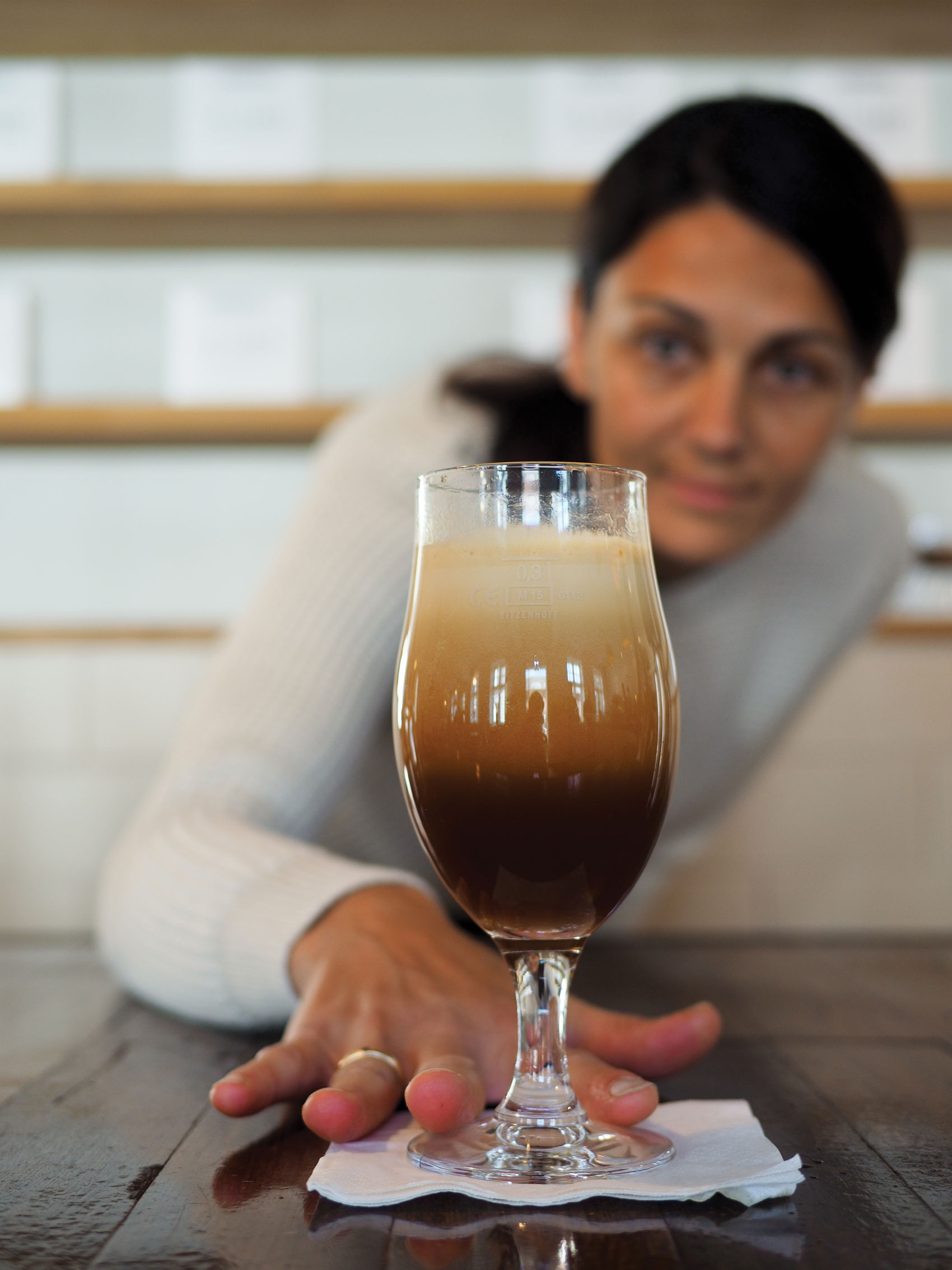Goldenfield Brewery is merging Canadian brewing with a melting pot of cultures to create a range of traditional and innovative flavours that can be enjoyed by everyone. Founded in 2020 by a group of friends in North York, Ont., the owners wanted to create a line of beers that pay homage to the diversity, uniqueness and wonderful aspects of Canada. Partner Ethan Chiti and head brewer Culum Canally discuss how the brewery began and the steps leading to their success.
When and how did Goldenfield get started?
Ethan Chiti: The idea came into my mind right before COVID-19 at the end of summer 2019. I was thinking about it and I hadn’t even talked to anybody about it, but then COVID-19 came, so I had time to do more research. Every day, I became more interested in the craft brewery industry and started looking for the equipment. Then, I went to other breweries to see what they had online and in-person. It was my first time opening a brewery and a manufacturing business.
How did you manage to get the partners together?
EC: After I came up with the idea, I talked to my best friend and his brother. We always wanted to create a business together. They agreed to come on board and work together. Later on, we got introduced to [Canally] – actually, we kind of found each other – and we’ve been working together ever since.
Culum Canally: [Chiti’s] family in Iran owns a leather tannery and his best friend’s family owns a couple of flour mills. They had a manufacturing background, so that helps explain why he and his friends were so eager to get started in manufacturing.
“There are two different mindsets. There’s opening the brewery and the excitement of getting a project done. Then there’s running a brewery, which is the day-to-day slog of managing and growing a business.”
Culum Canally, Goldenfield Brewery
How did you choose your location?
EC: Right after we ordered our equipment, we had to start looking for a location because in order to get all the licenses we needed a location. We finally found [one] after about six months of looking.
CC: There was a concentration of breweries on the west side, and it was a lot more expensive [there], so there were fewer risks on the east side. The east side had good links to downtown and the rest of Toronto, so that was good for scaling for distribution and access to the tasting room.
What did you like about the building?
EC: One of the hardest things to find was a building with high ceilings because of the size of the tanks that we ordered. We needed at least 14 feet for the ceilings, which was not easy. The other thing about the building that I liked was I always wanted to have a standalone building. I didn’t want to get a space in something like a plaza, which is attached to [many] other units. There were offices inside the building when we started, so we had to take them out to make space for our equipment.
CC: We’re on the first floor, but it goes down into a sort of basement in the back because we’re on a bit of a hill. We’re essentially on a floating slab, where we were able to drill some holes for drainage. It can also take the load of the equipment. We have a nice loading dock out front that allows us to get easy access in and out for supplies and shipping.
What was the permitting and licensing process like?
EC: The very first permit that we had to apply for was from the AGCO (Alcohol and Gaming Commission of Ontario), which allows us to manufacture beer. We needed to get three licenses: A manufacturing license, a boiler gas license and a retail store license. It requires many documents, but we didn’t have a hard time. The most time-consuming license was the city license, so we could open our doors to the public.

CC: To add some context, in order to get our manufacturing license, we had to get our excise license from the CRA (Canadian Revenue Agency). It’s one of those weird scenarios where you have to apply for your manufacturing license, and then they give you a provisional license to brew the beer. You then brew a beer and submit it to the Liquor Control Board of Ontario (LBCO) for testing. They test it, and if they say it’s okay, you can then submit that to get your manufacturing license.
At that point, you can now apply for your excise license, which means that the CRA comes in – or in this case they do it virtually – where they measure your tanks and look at your equipment so they can have a baseline for what they’re going to tax you. This provides them with accurate information on the size and scope of your brewery. The CRA can then give you the excise license, which you can put in for the manufacturing license, and then you get your full manufacturing license.
So, it’s a bit of a back and forth. I think some of it doesn’t make much sense because you’re technically not allowed to open until you have your manufacturing license, but you need to submit a beer to LCBO for them to test it.
Did you have to open in phases because of this process?
CC: We started to phase in July 2023 when we got the taproom license, but we didn’t launch yet. We sold cans of beer, but we weren’t quite ready at that time to have a grand opening. It took a few months to plan and get our beer stock up. We also had to co-ordinate all the parts of having the grand opening, which didn’t take place until November. We had a packed house when we opened.
What sets your business apart?
EC: The first is the ownership and the second is that we are trying to introduce the craft beer industry to people that have not yet been introduced to the industry. Most of our customers who come into the brewery say it was the first time that they visited a brewery.
“When we sat down and did the marketing plan, the owners said they had a lot of friends who didn’t know about craft beer, but when they were introduced to craft beer they really liked it. They were not your traditional craft beer consumers so we came to the conclusion that this might be a growing market or an untapped market that Goldenfield is uniquely situated to target.”
Culum Canally, Goldenfield Brewery
CC: When we sat down and did the marketing plan, the owners said they had a lot of friends who didn’t know about craft beer, but when they were introduced to craft beer they really liked it. They were not your traditional craft beer consumers so we came to the conclusion that this might be a growing market or an untapped market that Goldenfield is uniquely situated to target because of the ownership coming from a non-traditional craft beer community like Iran. There are also a lot of networks within other new immigrant or first- and second-generation immigrant communities that aren’t traditional craft beer drinkers.
So, the idea was to focus on that target market first and foremost. We also wanted to develop a community that is based around our area. A lot of your market comes from within a small radius around the brewery. It just so happens that our area is fairly multicultural, so the ones who are walking by here come from all sorts of backgrounds.
What is the current beer line-up?
CC: Our beer lineup includes what we’re calling a Persian Pilsner, which is pretty much a Mexican Cerveza. But it’s with a twist of different flavours based on hops and just using hops as the flavouring. It has more grape and lime to it. We also have a solid amber ale and a solid IPA.
Strangely enough, we have a double IPA, which was an accident from our first brewing. We never really intended to brew a beer that strong, but people took to it. It was daunting to try and reproduce the same beer in the same method. We’ve gotten pretty close with our second batch and it’s selling well.
What advice do you have for someone thinking about setting up a craft brewery?
EC: The first advice from me would be that it takes longer than you think. It’s much longer and it’s a hard process. At the same time, it can be enjoyable because you will see that it’s growing.
CC: I would say there are different skills to open a brewery and to run one. I remember opening my first brewery and I realized the day after the grand opening that now we have to do this day in and day out. So, there are two different mindsets. There’s opening the brewery and the excitement of getting a project done. Then there’s running a brewery, which is the day-to-day slog of managing and growing a business.
I would also suggest creating as comprehensive a business plan as possible. That is the one thing that I think could be a game changer and forces you to think through a lot of your problems beforehand.




